This was neither the end of the semester we anticipated nor the graduation we expected, but it is the semester we have completed and the graduation we celebrate, said Dean David Brubaker this past weekend to a virtual celebration for graduates from the Center for Justice and Peacebuilding.
Those words encapsulate the whirlwind experience of the last nine weeks, as our semester was completely disrupted by the Covid-19 pandemic.
This was not the semester we anticipated, but it was the semester we completed.
And what choice did we have but to persevere, adapt, be flexible and patient, flatten one curve as we were being slung faster on an accompanying learning curve of what exactly to do with ourselves, our bodies and minds in this strange new world.
The following collection of photos and text is a snapshot of the semester, collected in real time and revisited now, for those of you who are more peripheral to EMU. It might help to give a sense of how faculty, staff and students responded in and out of classroom — in true EMU fashion, with resilience, empathy and commitment.
Here we go (online)!
Some of the first on campus to sense an impending switch were employees in Information Systems. They began thinking about remote learning during EMU’s spring break the first week in March, and in anticipation, beefed up their HelpZone articles on a variety of relevant topics.
By March 12, when EMU announced a move to online learning, IS had reviewed and increased capacity of all systems and equipment (including webcams, laptops and Chromebooks) necessary for online teaching and campus operations. Needless to say, they were busy.
Two graphs from Jenni Piper, director of User Services, tell the story:
First Helpdesk Tickets. The green line shows last year’s demand and the blue line this year’s.

And second, the number of daily Zoom meetings hosted through the campus account, beginning in early March.
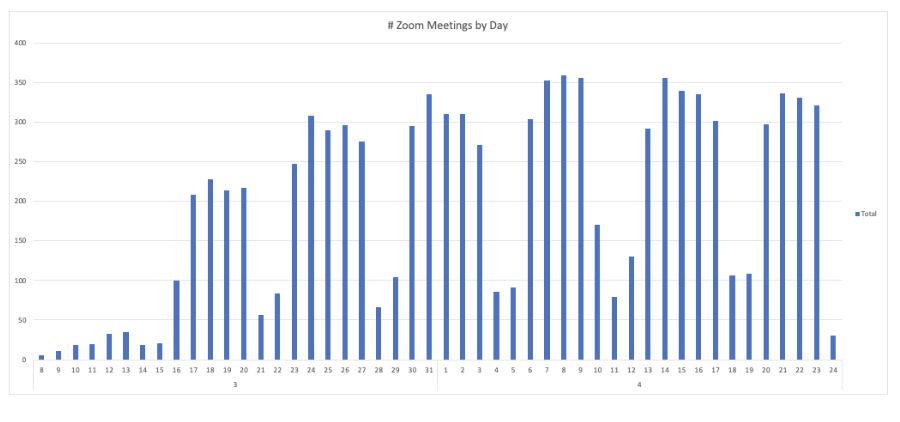
After hosting a training for faculty March 13 and the shift to online the classes the next week, IS handled 64 tickets on March 16, something of a watermark that shows when faculty and staff began to engage with the reality of a move to remote work.
Pedagogues thinking positively
About 10 days into the online shift, I asked a few professors how things were going. Some of their answers are included below. I was particularly struck by the positive perspective of veteran educator Carolyn Stauffer, professor of applied social sciences:
In reality, what we’re experiencing now is the presence of hybrid education. We’ve had the chance to meet in-person for the first part of the semester and now I get to know each participant’s online presence as well. It’s wonderful to be able to build on the assets of both sides of that equation!
Solo field trips
Professor Doug Graber Neufeld‘s “Natural History of the Shenandoah Valley” course syllabus was packed full of fantastic field trips to local natural wonders and lab experiences (like taxidermy practice below).
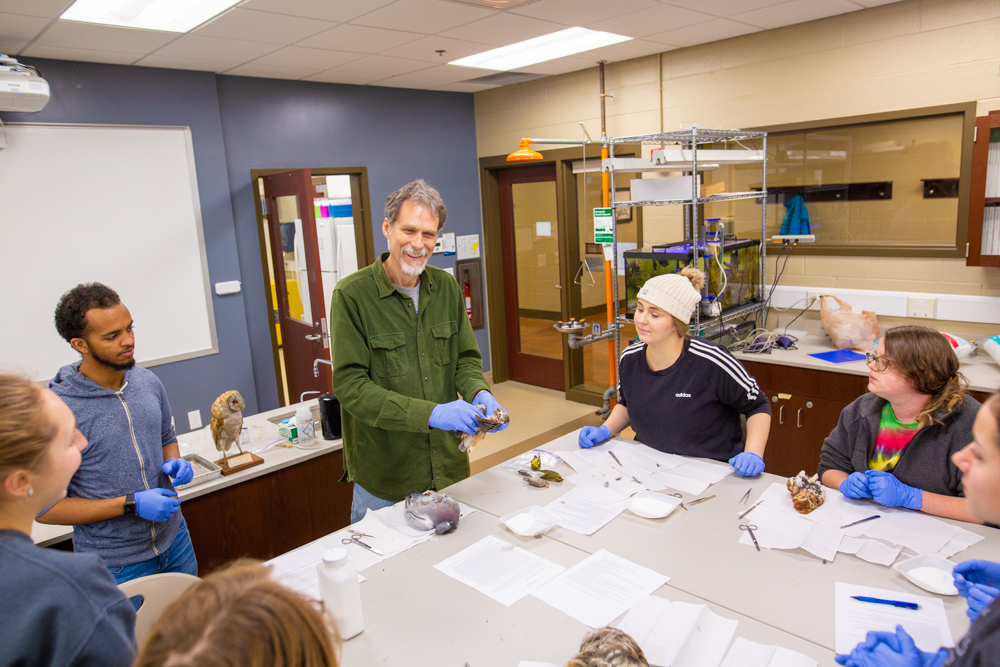
With his students scattered in mid-March, the field trips turned into independent explorations, such as Katelyn Dean‘s below. Here she holds morel mushrooms she and her dad found in the George Washington National Forest, just one find shared during class time.
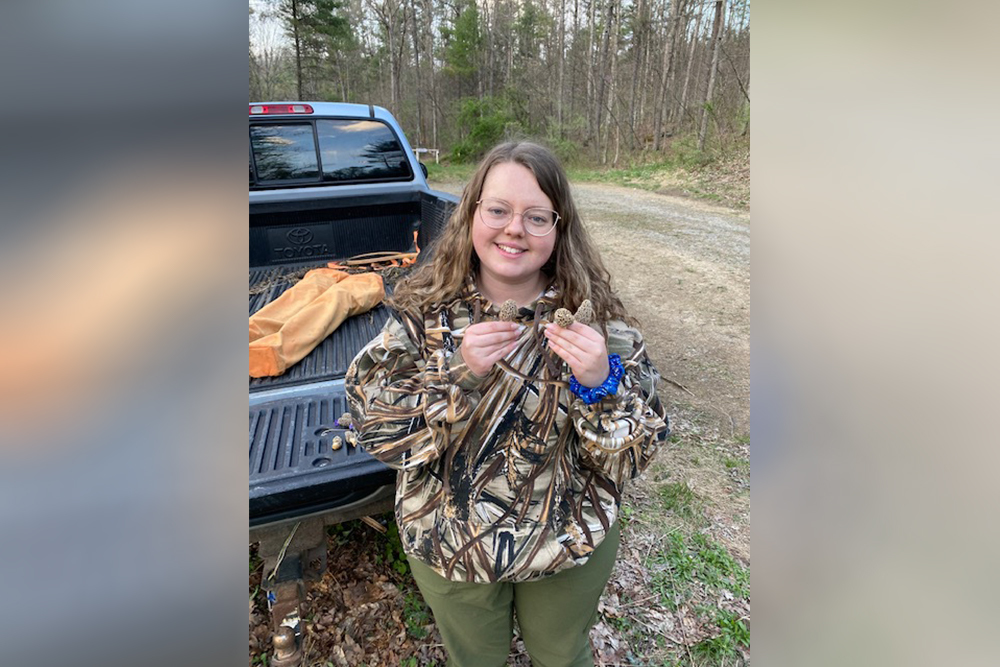
“It’s the highlight of my day to hear students who daily recount the joy they find in now recognizing the animals, plants and rocks around them,” Neufeld said. “In such unusual times, experiencing the beauty and complexity of the natural world together has been a unique source of hope for us.” Read more about this class.
Conversations continue
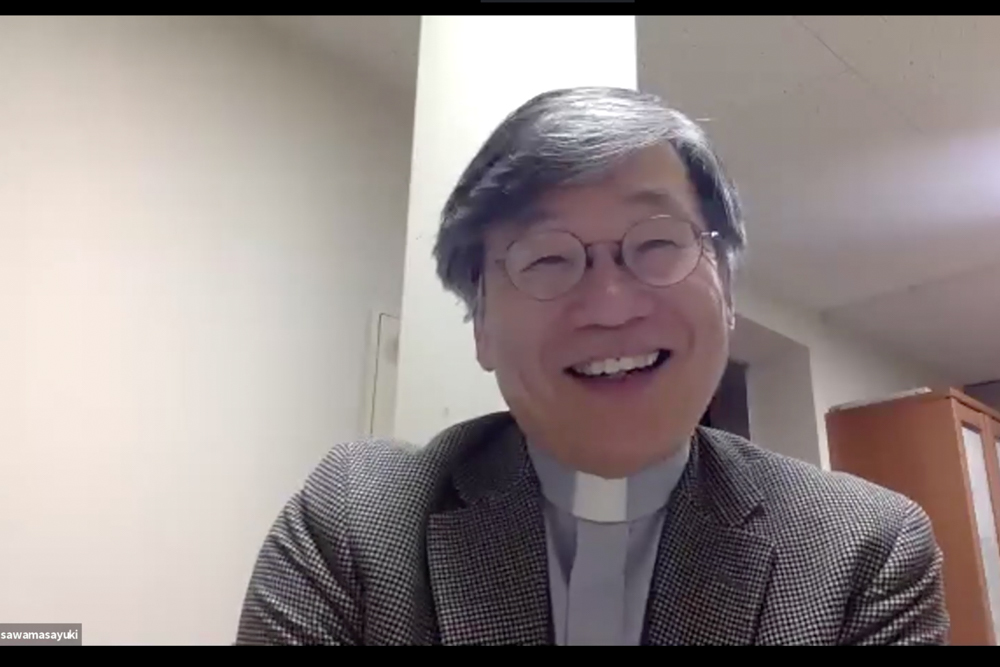
In Professor Marti Eads’ class “Ways of War and Peace,” students met virtually with Reverend Masayuki Sawa, the pastor of a Reformed (Calvinist) congregation in Japan. He spoke of his perception of contemporary Japanese attitudes toward World War II and Japanese perceptions of the US and our own military actions, then and now, among other topics.
The class was slated to visit the Holocaust Museum in Washington D.C. Instead, guest speaker Gillian Steinberg, an educator at the Salanter Akiba Riverdale Academy in the Bronx, and her students from the Modern Orthodox Jewish tradition met online with EMU students.
This conversation and the de-brief afterwards held richness and nuance, Eads said, with several classmates opening up about their own religious experiences, choices and identities. Recognizing the common humanity, despite labels — “just the idea of all of us sitting together talking and all of us from different groups” was a moving experience, said one of her students. [Gillian writes about her experience teaching remotely to high school students in this Washington Post magazine article.]
Creating community with virtual high fives
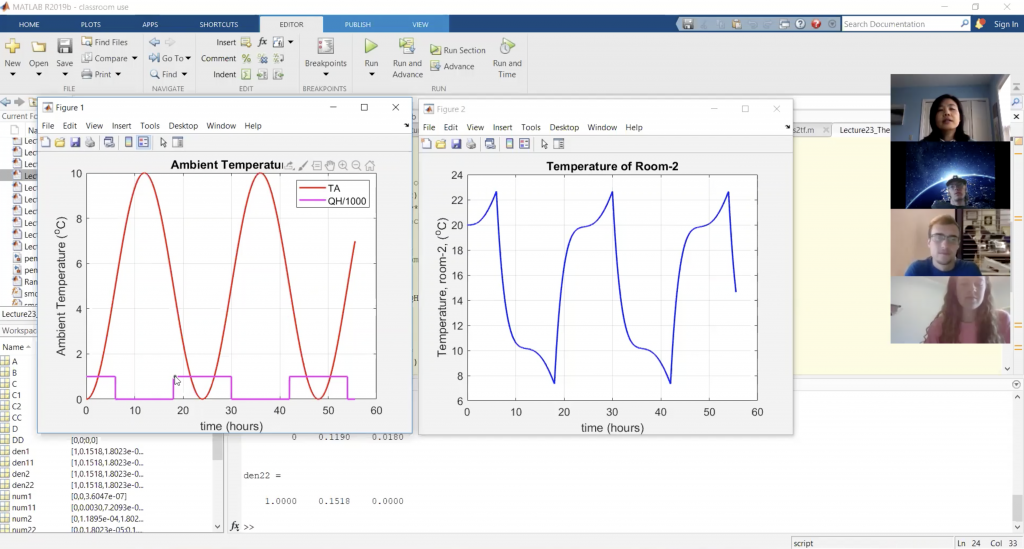
Engineering professor Esther Tian (pictured above at top right) continued teaching synchronous classes, preferring the structure and the presence of students. “It is also good for students to see each other and talk to each other before class as they would in a classroom.
We do high fives, thumb-ups (and downs) during class, we find out new features of Zoom and use them right away. It has been fun. I also found that one-on-one and small group Zoom sessions were working really well in answering students’ questions as well as advising..”
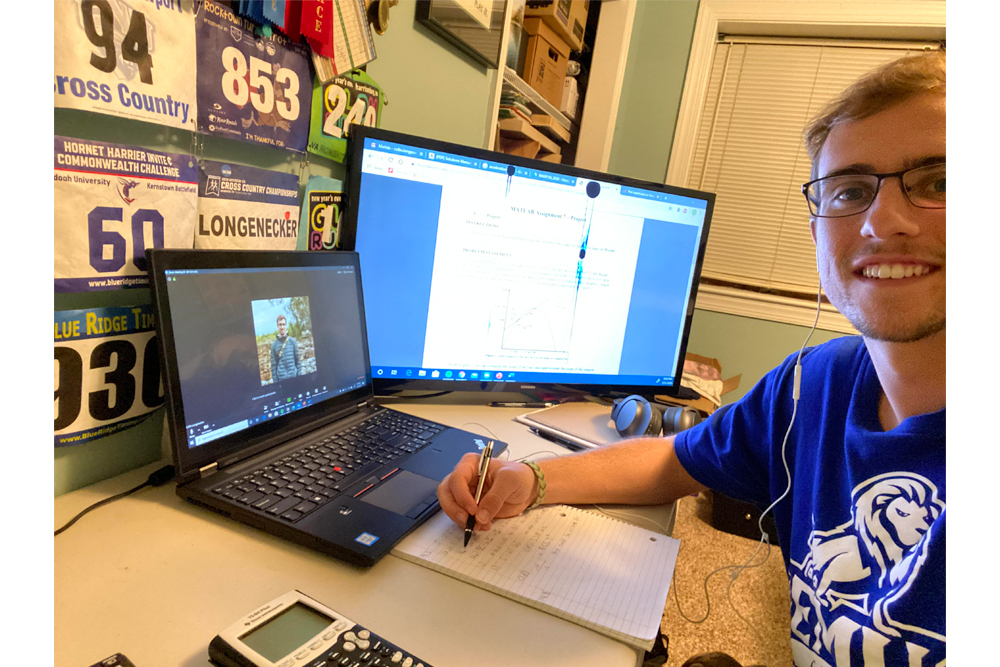
Senior Collin Longenecker, visible below Tian in the photo above and also at right, was an embedded tutor with a first-year engineering course. Though initially he wasn’t sure how Zoom sessions would work, he adapted well: “The students pop in and out and they can share their screen with me. It is almost like I am in the engineering lab looking over their shoulder trying to help them troubleshoot the problem. I have been helping a few students that I had not helped before we went to online school which is cool.”
Read more about EMU tutors at work during online classes.

The power of community to enhance learning was the top tip in a blog post titled “Teaching Mechanistically Online” by Dean (and chem prof) Tara Kishbaugh for fellow organic chemistry teachers using the same texbook. “Community Matters,” she began. Use the relationships that have already been built to help students continue asking questions and learning in small peer groups. And she reminded readers, you can still greet each student individually when they enter your Zoom classroom.
Tech fails/wins: ‘chipmunky’-ness and new relationships
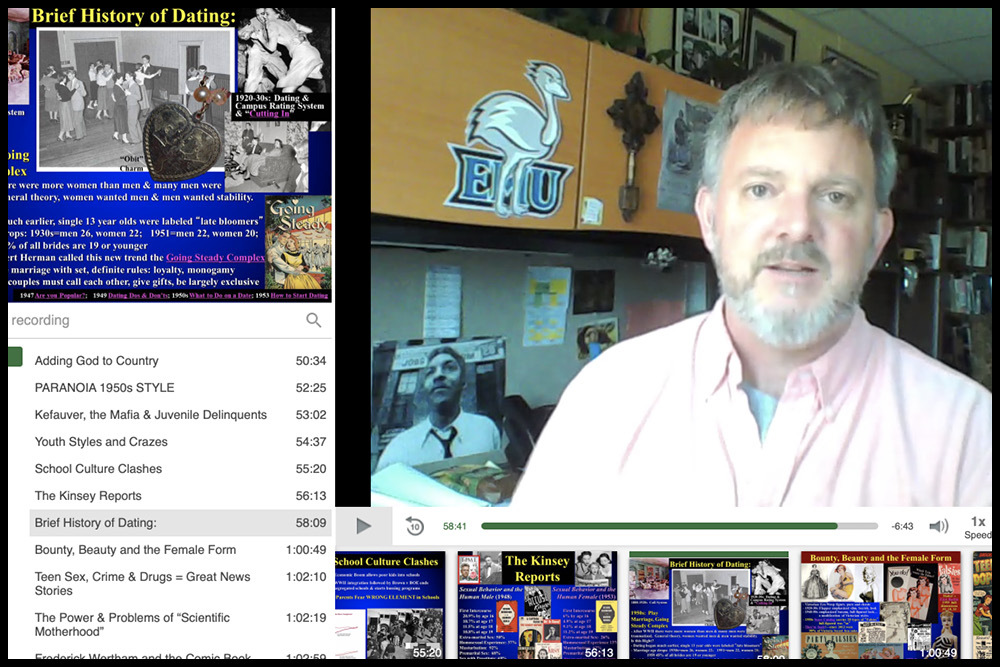
Professor Mark Sawin teaches U.S. History 103, from World War I to the present, with a focus on “power and paradox.” Sawin tried to do a synchronous class on Zoom and “it rather hilariously and spectularly failed,” he reported.
“So, since then, I’ve been pre-recording all my lectures on Panopto so students can watch them asynchronously, and with that program, you can adjust my speed. At 1.5 speed, I start to get rather chipmunky… at .5 speed I sound like the television show ‘Drunk History.’ I’m not sure if that amuses students, but it certainly amuses me.”
With the lectures available at any time, he began using normal class time as an open forum where students could drop in and ask questions.
“I’ve had some wonderful 1-on-1 conversations with students that I would never have had in our normal class setting. In this sense, our ‘social distancing’ has actually provided some closeness that wasn’t there before, and for that I’m grateful,” Sawin said. “I’ve also been pleased and touched by the grace that students have extended to us as we struggle to move our classes online. And I believe we, too, are showing that grace, focusing on the learning objectives and the big important ideas, and allowing a lot of latitude when it comes to the many wifi issues, isolation stresses, and general quarantine chaos we’re all learning to live with.”
Grace and connection
That grace is something education professor Paul Yoder has also experienced. Students in his classes are pre-service teachers and as a pedagogical specialist himself, the shift to online classes provided ample room for discussions around topics related to the digital classroom.
He wrote: “The key word in my planning for weekly class sessions via Zoom has been connection. We have taken time for each of the 18 students to rate how they are doing on a scale of 1-10 and then share with the group. Last week I sent individual emails as a follow up to the few students who placed themselves on the low end of the scale. I have also been excited to hear from some of my advisees who have shared their affirmations of how professors are providing flexibility as needed. Particularly as we recognize that not all of us have the same level of internet access, I know that living into an ethic of care is essential.”
Nancy Heisey, seminary dean, also used check-ins with her classes, which often included adult students who juggled many responsibiliities, including pastors working in ministry settings.
“We take time every period to share ‘how it’s going’ and encourage one another. Some students are struggling with a household where everyone is working on line in a crowded space—spouse tele-working, children trying to do homework, and seminary student worrying about class work and how to get a video service up for their congregation’s Sunday service.
“I’ve been amazed, though, at the depth of engagement—this morning, my New Testament students each did a creative rendering of a parable of Jesus. They were funny, sobering, and encouraging!”
Hearing some of those needs led seminary professor Sarah Bixler to host an April 1 online gathering that drew 32 pastors, including 22 alumni, from four denominations and eight states. This has led to a free online series for pastors. Check it out here.
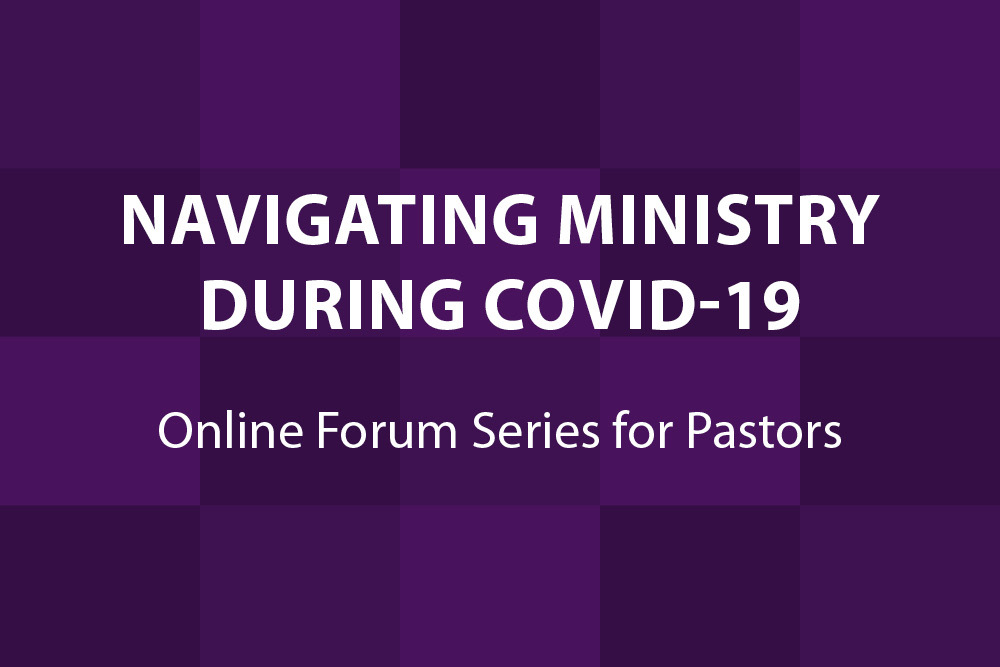
A wider global market for CJP
Innovation happened quickly during the Center for Justice and Peacebuilding’s facilitation class, co-taught by Professor Catherine Barnes and Amy Knorr. Students usually practice skills they’ve learned in person by helping clients with a planned discussion, strategic visioning or group dialogue. With face-to-face options limited and practice still required, students moved online.
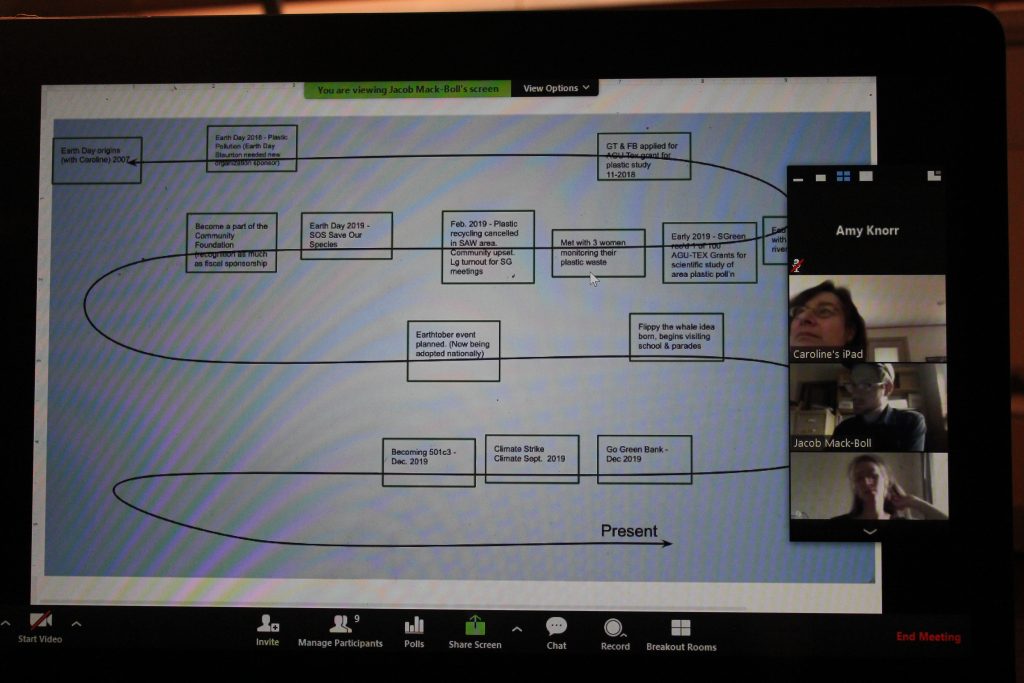
Above, one group produced an online strategic planning for Shenandoah Green, a local environmental group, including a circle process, a historical reflection using a digital timeline that folks could fill in, and a card sort, a way of getting ideas out into the open and then grouping them together. “Board members at Shenandoah Green were delighted,” said Knorr, who helps coordinate practice settings for CJP students.
In the midst of the pandemic, CJP also hosted several online gatherings for alumni to connect and share resources.
And significantly, center staff moved quickly to adapt the Summer Peacebuilding Institute to online classes, expedite a new hybrid graduate degree program in transformational leadership, and prepare upcoming semester classes for online delivery.
The massive disruption and accompanying move towards online learning and programs have created new opportunities, said Executive Director Jayne Docherty, especially in a previously untapped market of prospective participants who could not have afforded to travel or would not have been issued a visa in the current environment.
“In the face of the pandemic, many people are waking up to the fact that our societies have become more unequal and unjust and that we are teetering on the edge of violent confrontations between social subgroups. Some of those people are saying, ‘This can’t continue. This is just wrong. What can I do? I want to be part of the solution.’ By moving our programs online quickly, we have helped channel their energy and impulse to help others in ways that prevent violence and address injustices.”
’12 hours ahead of our students’
As daily reports arrived into faculty in-boxes about the closure of practicum and internship placements to students, the nursing department focused on making sure their seniors could graduate on time and join the fight against covid-19.
For one cohort, that meant three 12-hour shifts at a local hospital. For others, they logged clinical hours (and their supervising professor also took calls) at a special covid-19 public health hotline.
“The faculty were meeting hour to hour, staying 12 hours ahead of the students as we were making decisions,” said Professor Melody Cash.
Eventually, a waiver allowed faculty to substitute simulation hours for live clinicals and all 16 seniors finished out the semester in good standing, ready to join the workforce.
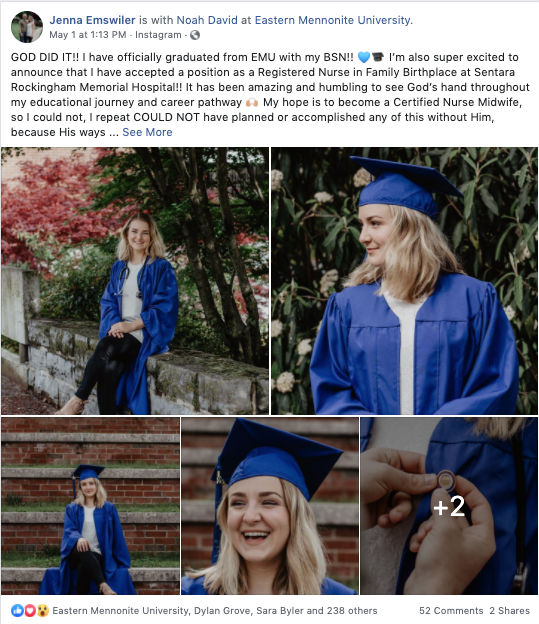
It’s the small things…
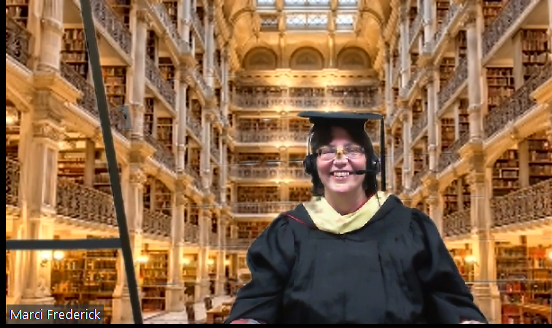
Marci Frederick (above), director of Sadie Hartzler Library, and Professor Kevin Seidel dressed in academic regalia in honor of their senior seminar students for their last Zoom class meeting.
Congratulations, EMU family, on the end of the semester we did not anticipate.
We celebrate.


I loved getting this glimpse into how faculty (and students!) are adjusting to these circumstances. Sounds like people are showing the compassion and grace needed at a time like this.
This is a good report of your adjustment to this special time. But more than that, it is an indication EMU can become even more innovative with on-line education and expand its student body into the larger world. Hopefully EMU will use its creativity and become a leader in education through new technologies.
This is a fantastic story ! What a rich experience we have shared!
Thank you, EMU, for sharing how you adjusted to this new reality.
Inspirational! Thanks to my wonderful colleagues who are giving me several ideas for my own courses. One thing that stands out in every case is how much each of these professors cares about their students on a personal level.